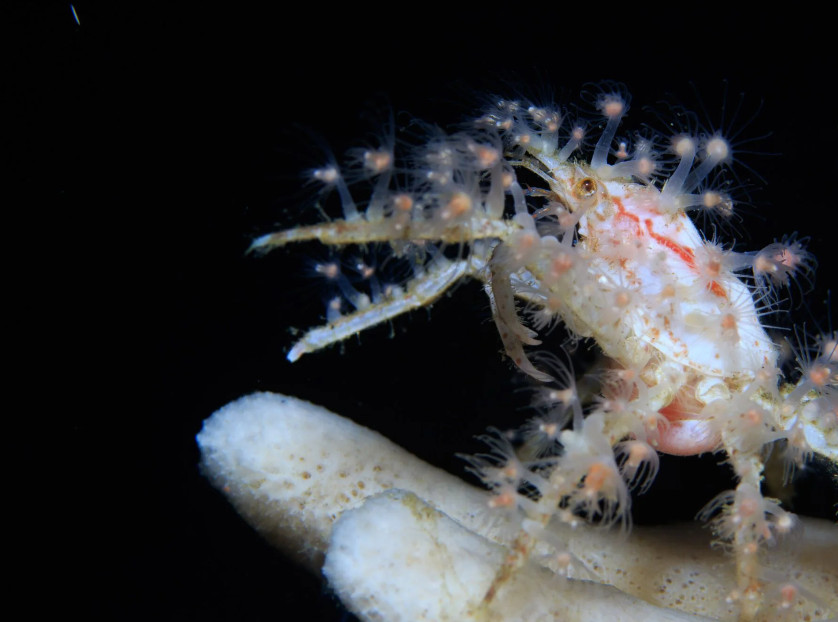
The term ″decorator crab″ describes many different crabs found worldwide, including several different species of spider crabs, harlequin crabs, moss crabs, little seaweed crabs, and toothed crabs.
In general, decorator crabs are opportunistic when looking for camouflage, similar to how colorful hermit crabs scavenge their shells. The crab will select pieces of seaweed, coral, rocks, or even other small animals from around its habitat and then fastens them to hooked bristles on the back of its shell. This camouflage helps protect the crab from predators and so long as they stay in the general area of where they scavenged, the crab can look near invisible on the reef or seafloor.
The hooked bristles along its body are known as setae and they act very much like Velcro. This allows for the crab to change what is hooked to its body if needed — for example, a crab may take off a ring of seaweed scavenged earlier if it finds a stinging anemone that could better scare off a hungry fish or larger crab.
Like many crabs, decorator crabs molt as they grow, shedding their inflexible shells when they become too small. The soft crab is incredibly vulnerable during this process and hides from predators as the new shell hardens. Many decorator crabs recycle their old decorations from their old shell, moving them carefully to the new shell as it hardens.